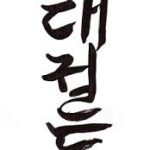This subject can be quite complicated, and also controversial, so I have tried to explain it in simple terms. Whilst it is important that we understand the principles, never lose sight of the most important thing – that your techniques work effectively! It cannot be stressed enough to allow the beginning student to move naturally first and get a feel for the movements rather than bombard them with scientific […]
More...Category Archives: SZ Basics
Theory of Power
Him Ui Wolli The beginning student may ask “Where does one obtain the power to create the devastating results attributed to TaekwonDo?” This power is attributed to the utilisation of a person’s full potential through the mathematical application of TaekwonDo techniques. The average person uses only 10 to 20% of their potential. Anyone, regardless of size, age, or sex who can condition themselves to use 100% of their potential can also […]
More...Training Secrets of TaekwonDo
An old proverb says that even heaven cannot make a diligent worker poor. However, in TaekwonDo, diligence or intensive training alone does not produce quality techniques. On the contrary, instructions from a false or unqualified instructor would be worse than not being taught at all because unscientific movements not only reduce the power but require a tremendous amount of time to correct. On the other hand, under the proper […]
More...TaekwonDo Stances
Stances are the foundation on which every technique is built. If the stance is weak or incorrect, then any technique will be weakened or may even become ineffective. When performing a pattern at a competition this will result in lost points; when using Taekwondo in a real life situation this could result in defeat. There are many different stances in Taekwondo, each with its own purpose and application. We practice […]
More...Korean Pronunciation
Correct pronunciation of Taekwondo terms in Korean can be tricky, especially if all we have to learn from is a textbook. Click the link below to go to itkd.co.nz which is a really nice site. There is a great section on Korean pronunciation, spoken by a Korean master. Click Here
More...Counting in Korean
There are two different numbering systems that are used by Koreans. The first numbering system is used when counting, or when only speaking of the numbers themselves. This is what we use in class. The first ten numbers in this system are as follows: (The phonetic pronunciation is in brackets) 1 Ha-na (han_ah) 2 Dul (dool) 3 Set (set) 4 Net (net) 5 Da-Seot (das_ol) 6 Yeo-Seot (yas_ol) 7 Il-gop […]
More...Terminology
Why do we learn Theory and Korean Terms?Learning the theory behind TaekwonDo is an important part of your training. At every grading you will be tested on theory and Korean terms relevant to your grade. You should also try to remember theory and Korean terms from all previous gradings.TaekwonDo is an international martial art originating from Korea. As such the terminology is taught in Korean to break down international language […]
More...Basic Theory and Terms every student should know
One of the first things the beginner notices when they start training is the unfamiliar words used in class. Because TaekwonDo is an international martial art, we use Korean to overcome language barriers and allow teaching, learning and training for any student regardless of their nationality. After all, TaekwonDo originated in Korea; had it been London, then English would have been used. By using the Korean terminology, we can train […]
More...How to tie your belt correctly
It is important to tie your belt correctly to stop it coming loose during training. This is one of the most commonly asked questions. Take a look at the diagram below:
More...
